Learning why we DID NOT get the job can be the most value-packed free resource, and I’m surprised by how available it is to us if we ask. With a bit of timely follow-through, we could potentially receive the clear strategic feedback every business needs.
Negotiating
Work Exchange For Experience and Portfolio Work
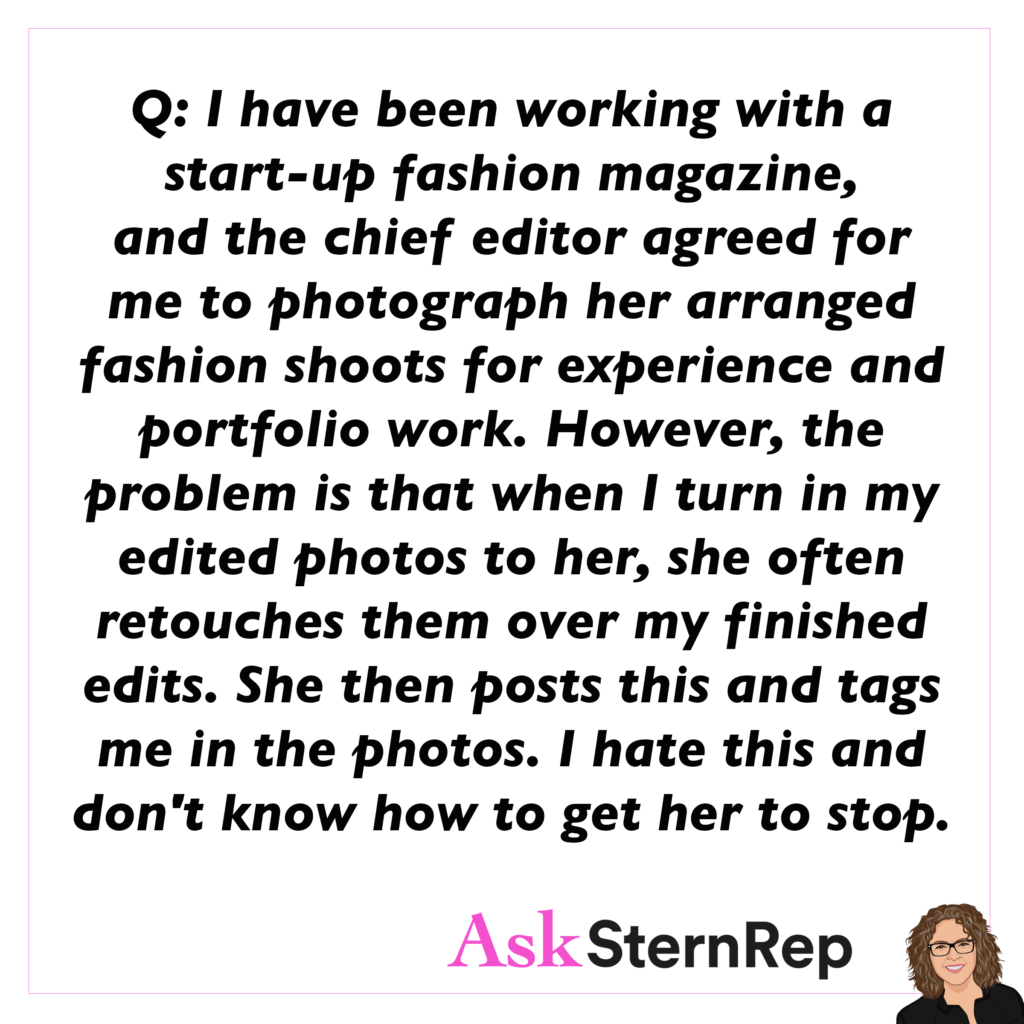
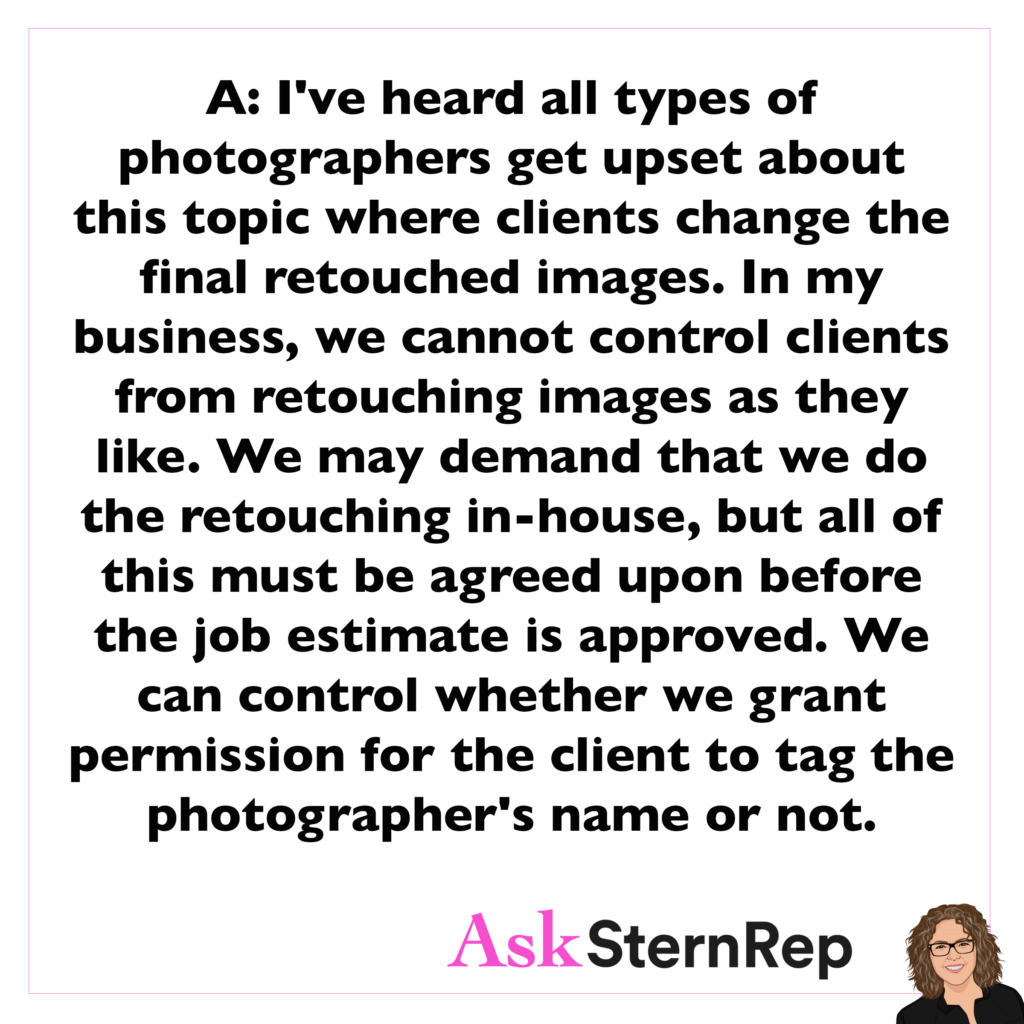
Q:
I have been working with a start-up fashion magazine, and the chief editor agreed for me to photograph her arranged fashion shoots for experience and portfolio work. However, the problem is that when I turn in my edited photos to her, she often retouches them over my finished edits. She then posts this and tags me in the photos. I hate this and don’t know how to get her to stop.
A:
I’ve heard all types of photographers get upset about this topic where clients change the final retouched images. In my business, we cannot control clients from retouching images as they like. We may demand that we do the retouching in-house, but all of this must be agreed upon before the job estimate is approved. We can control whether we grant permission for the client to tag the photographer’s name or not.
Shooting Tests With Models As A Trade Deal

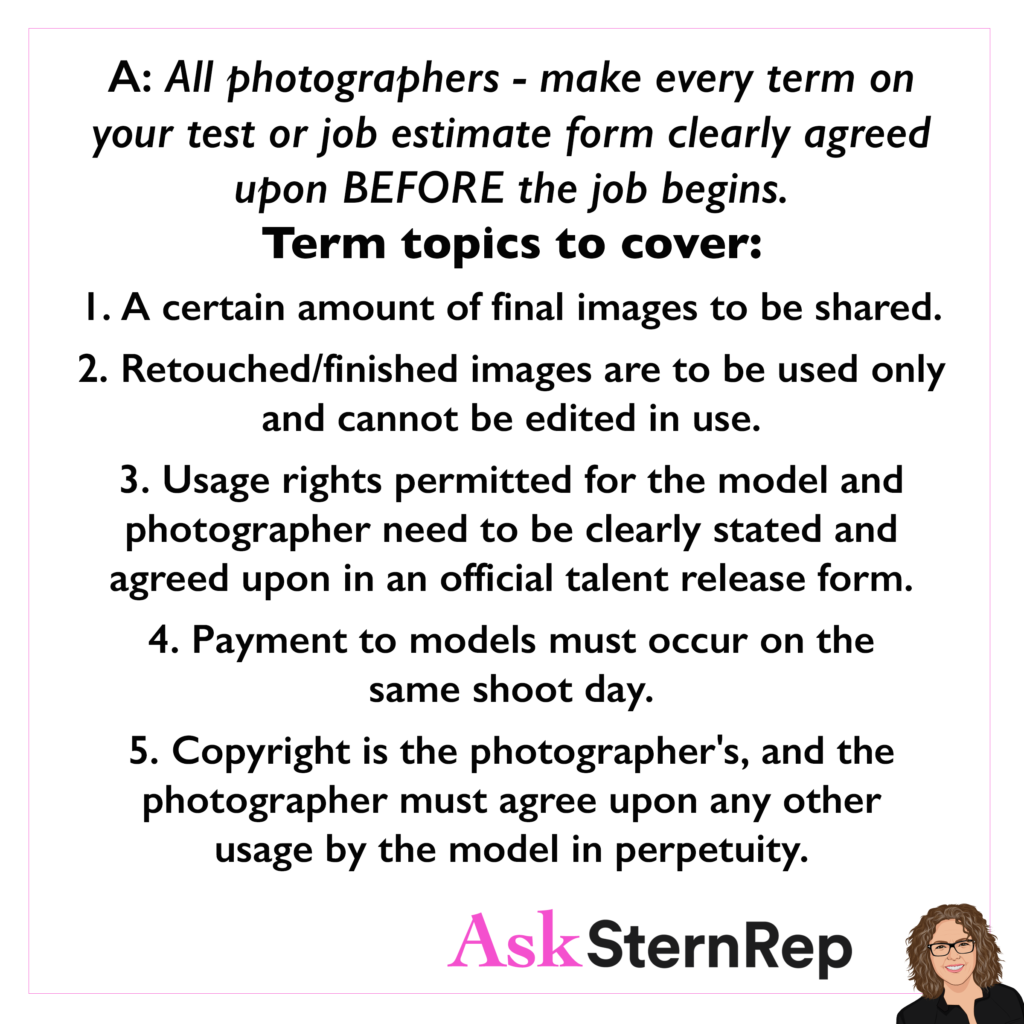
Q:
In building my portfolio, I test often with many models as a trade deal. The problem with this is when I send the model the raw images, they ask for all of them. I don’t want my name associated with all the images, so how can I set this boundary to only share the best images?
A:
All photographers – make every term on your test or job estimate form clearly agreed upon BEFORE the job begins.
Term topics to cover:
1. A certain amount of final images to be shared.
2. Retouched/finished images are to be used only and cannot be edited in use.
3. Usage rights permitted for the model and photographer need to be clearly stated and agreed upon in an official talent release form.
4. Payment to models must occur on the same shoot day.
4. Copyright is the photographer’s, and the photographer must agree upon any other usage by the model in perpetuity.
Communicate WIth Your Client To Aid In Negotiation
NEGOTIATING TIP 101:
Get the most information in the shortest amount of time with a good old-fashioned client Phone Call. Use the phone time wisely to get those “awkward to ask” questions about budget, first choice, competition, and lowest bid topics. It’s that one-to-one camaraderie with off-the-cuff, less self-aware personalized touch moments.
Negotiating over the phone is more effective than doing it in person or via Zoom. In our experience, more information is shared once people warm up and get to know each other on the phone. We’re unsure why this is the case, but perhaps people may be less aware of themselves on the phone, making them more likely to share information. We recommend trying an old-fashioned chat for negotiations.
How To Avoid Getting Trapped In Bid Prices
Save yourself from getting trapped in bid prices without correct production tasks by naming your estimate as a BALLPARK BID. Your costs can be listed as menu options instead of included in your total. “Costs may change depending on the information provided.” All the ways to be as accurate as you can with the information you’ve been given.
When bidding on projects with incomplete information, it is advisable to make ballpark bids to protect oneself from potential changes in costs. The use of TBD (to be determined) for uncertain details such as usage, and menuing out all possible options, can help emphasize that there may be fees associated with certain aspects of the project. It is important to make it clear that all estimates and bids are subject to change depending on new information and to avoid trapping oneself into fixed prices. The use of clear language in emails and estimates can help ensure that there are no misunderstandings or surprises later on.
Connecting With A Client Is The Best Sales Pitch
The BEST SALES PITCH I can recommend is to humanize what we call “sales” by listening. So simple and yet the most powerful way to negotiate, stay in front of clients, or sell ourselves. Take the first hello moment on a Zoom call, notice something about them, and ask a question. Connect by listening to get your foot in the doors.
The best sales pitch is to humanize the clients and be real, honest, and listen to them. Humanizing the clients means to understand them, empathize with them, and treat them as individuals, not just as potential customers. Being real and honest means to not make false promises or exaggerate the product’s capabilities. Listening to the clients is crucial as people want to be heard and understood. It doesn’t take very long to notice something about them and ask them a question, which can help build a rapport and establish a relationship. The best sales pitch is to recommend the product or service that meets the client’s needs and wants, not just to sell something for the sake of making a sale. The key is to build trust and credibility with the clients, which can lead to long-term relationships and referrals.
How Should Photographers Handle Job Date “Holds”

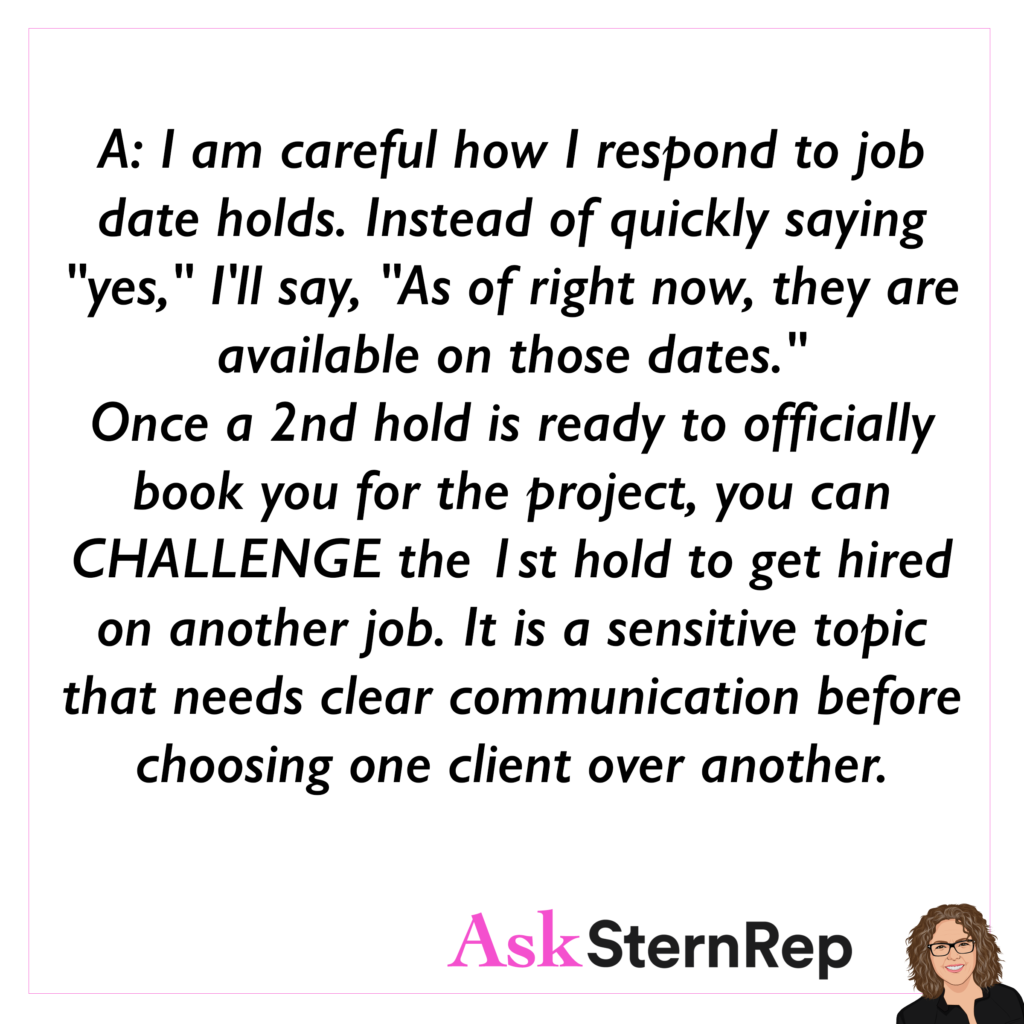
Q:
How should we handle job date “holds” when we prefer to get the higher-paying or more interesting offer when holding those dates for someone else?
A:
I am careful how I respond to job date holds. Instead of quickly saying “yes,” I’ll say, “As of right now, they are available on those dates.” Once a 2nd hold is ready to officially book you for the project, you can CHALLENGE the 1st hold to get hired on another job. It is a sensitive topic that needs clear communication before choosing one client over another.
OVERTIME
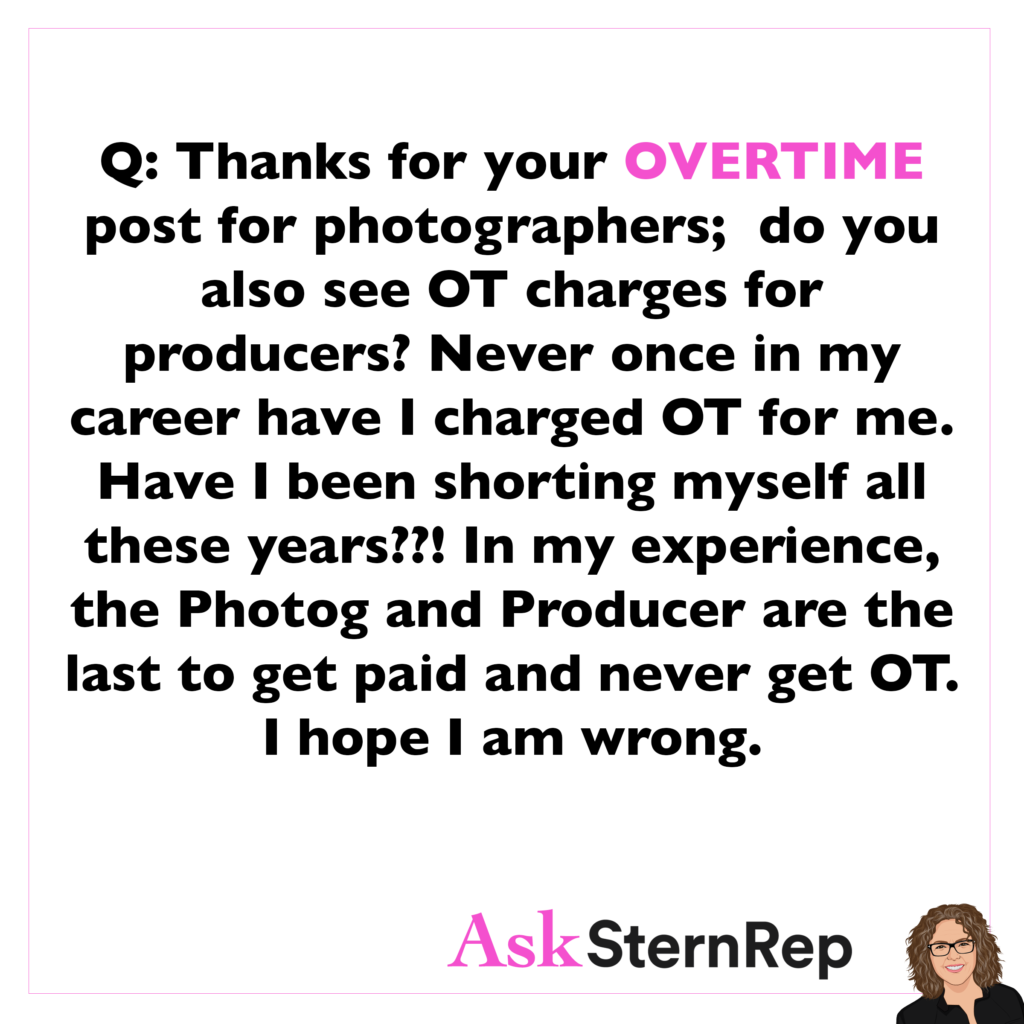
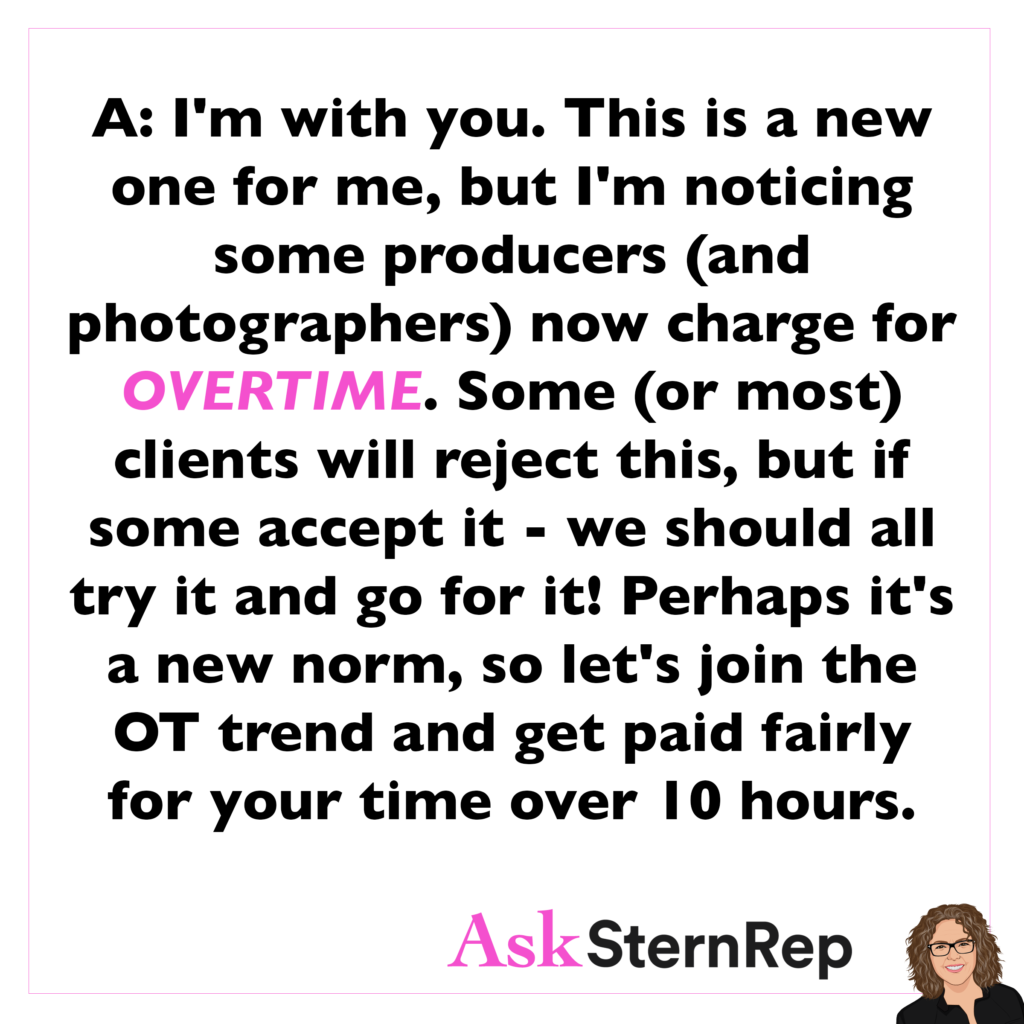
Q:
Thanks for your OVERTIME post for photographers; do you also see OT charges for producers? Never once in my career have I charged OT for me. Have I been shorting myself all these years??! In my experience, the Photog and Producer are the last to get paid and never get OT. I hope I am wrong.
A:
I’m with you. This is a new one for me, but I’m noticing some producers (and photographers) now charge for overtime. Some (or most) clients will reject this, but if some accept it – we should all try it and go for it! Perhaps it’s a new norm, so let’s join the OT trend and get paid fairly for your time over 10 hours.
Recognized Company With Low Rate
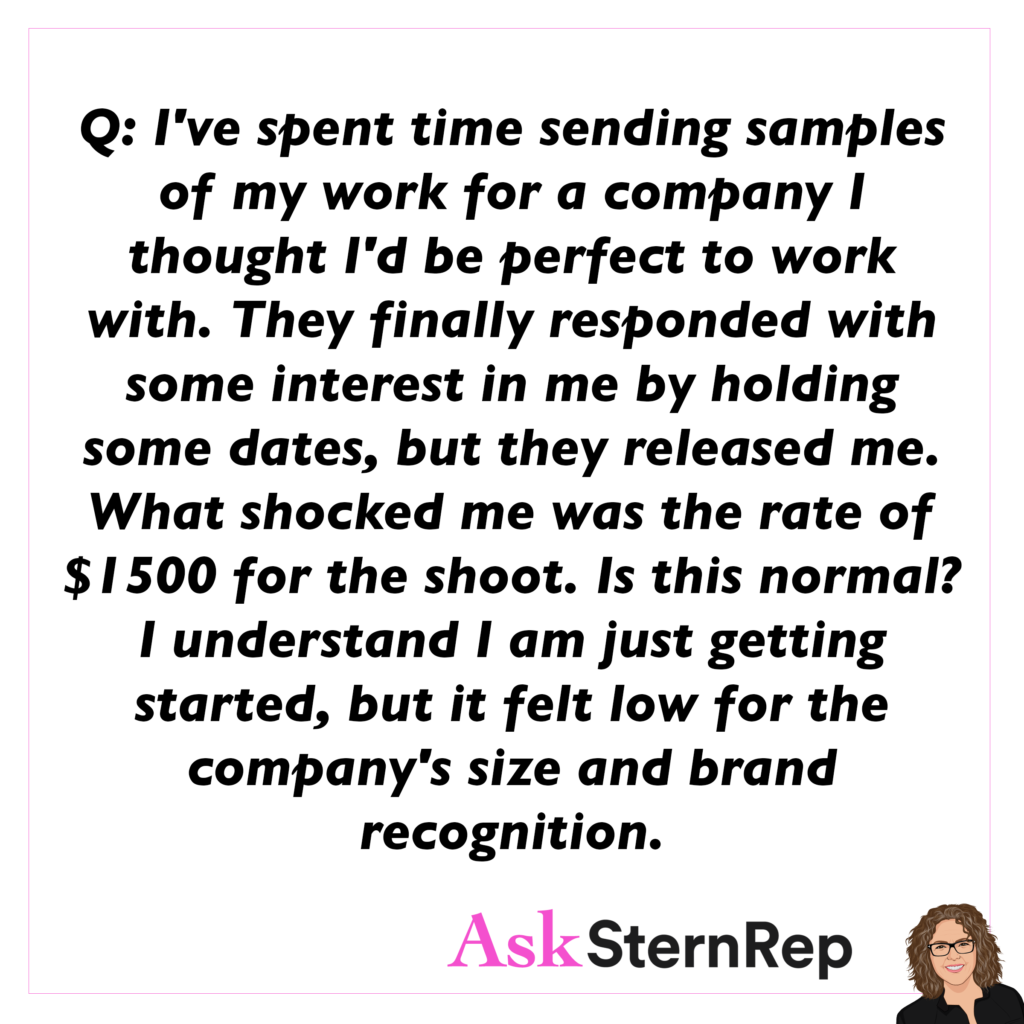

Q:
I’ve spent time sending samples of my work for a company I thought I’d be perfect to work with. They finally responded with some interest in me by holding some dates, but they released me. What shocked me was the rate of $1500 for the shoot. Is this normal? I understand I am just getting started, but it felt low for the company’s size and brand recognition.
A:
Kudos to you for getting your work out there to the companies you want to work with. That is step one. I see the increase of $1500 rates due to a heavily saturated industry with more in-house marketing clients, more photographers, and more marketing opportunities for all of us to be in direct contact with our dream clients. Take the feedback as a stepping stone to growing your dream client list, increasing your marketing options, and fine-tuning your testing/branding focus.
Saving a Client Relationship
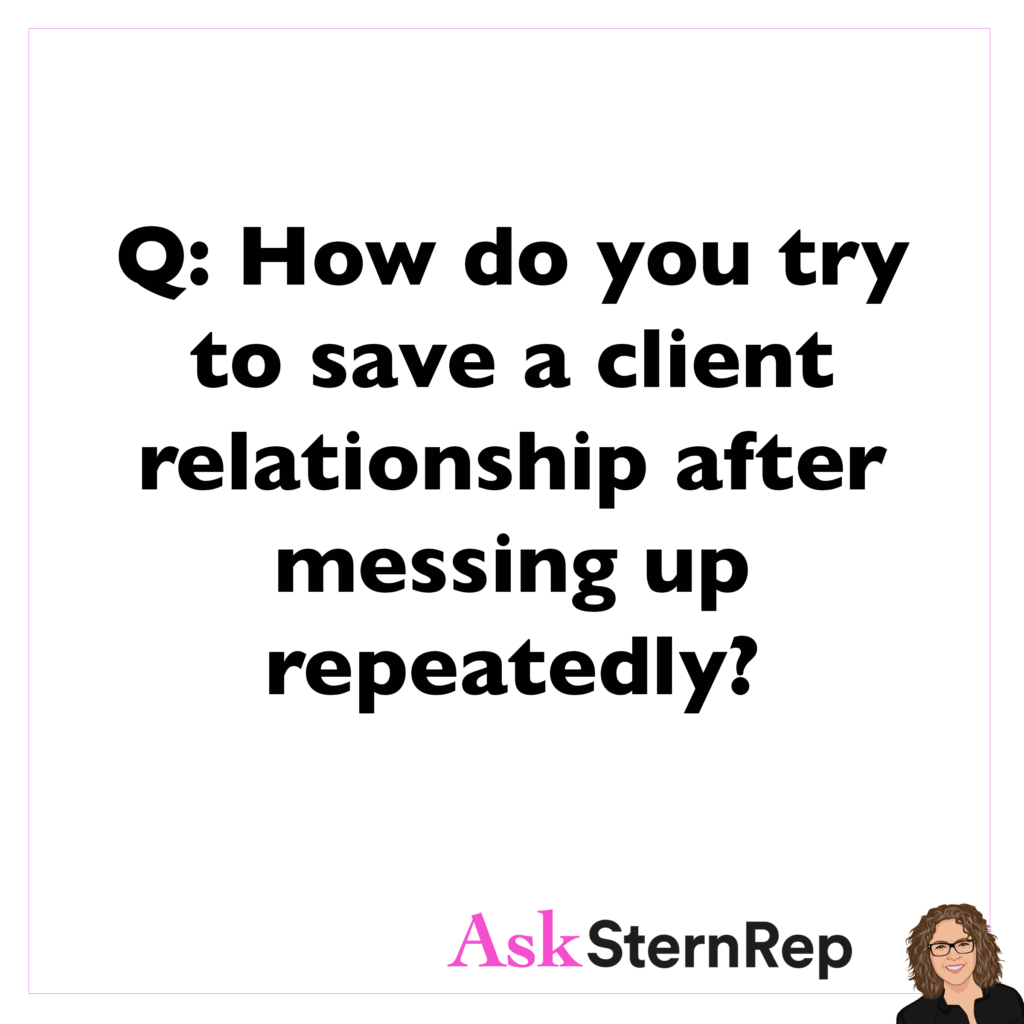
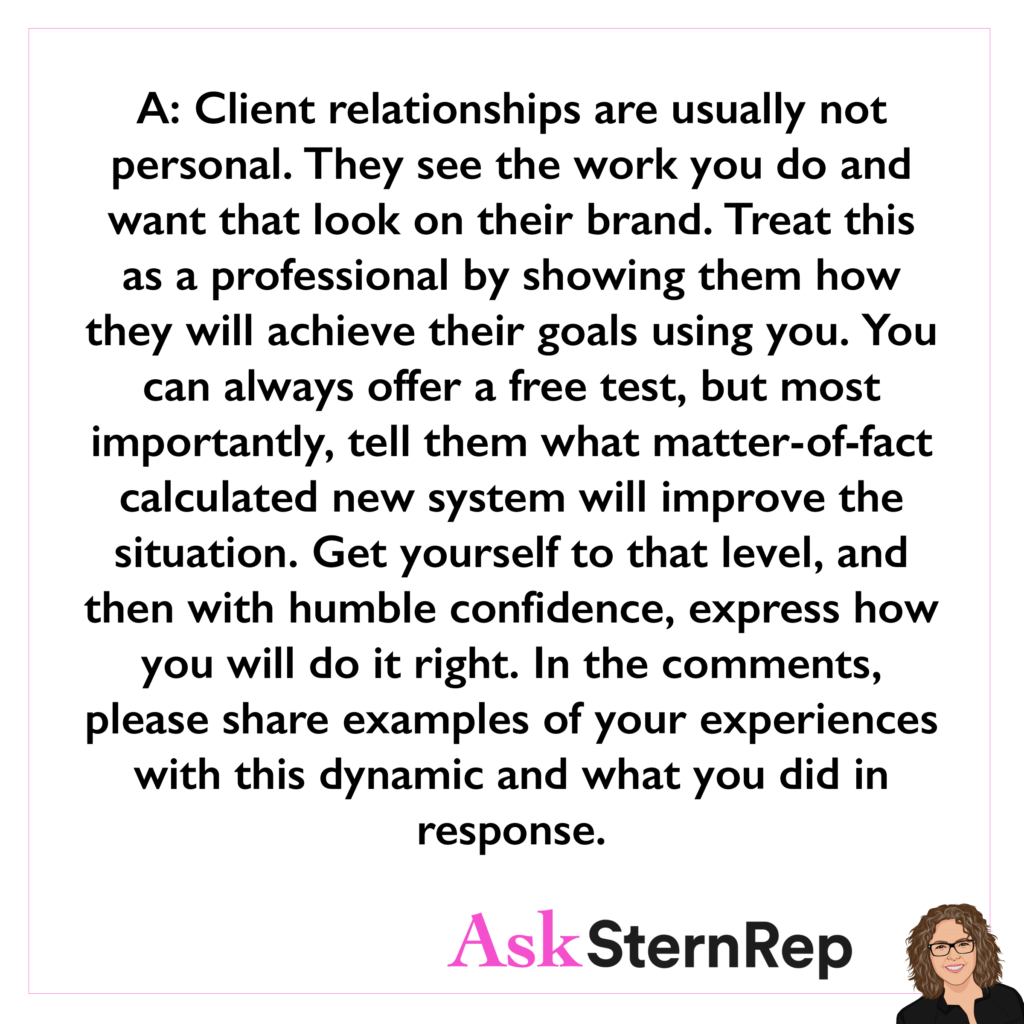
Q:
How do you try to save a client relationship after messing up repeatedly?
A:
Client relationships are usually not personal. They see the work you do and want that look on their brand. Treat this as a professional by showing them how they will achieve their goals using you. You can always offer a free test, but most importantly, tell them what matter-of-fact calculated new system will improve the situation. Get yourself to that level, and then with humble confidence, express how you will do it right. In the comments, please share examples of this dynamic and what you did.
